
 The newsletter of NASA's Radio JOVE Project
The newsletter of NASA's Radio JOVE Project"Solar and Planetary Radio Astronomy for Schools"

 The newsletter of NASA's Radio JOVE Project
The newsletter of NASA's Radio JOVE Project

The Radio Astronomy Club of J. R. Tucker High School in Richmond, Virginia has nearly completed construction of a Radio Jove system at their school. According to Brooke Merritt, club president, they have completed the assembly of two dipole antennas and most of the receiver. The club meets on Saturdays for about 4 hours and there are usually eight students participating at each meeting. They expect to have the system completed in the next few weeks.
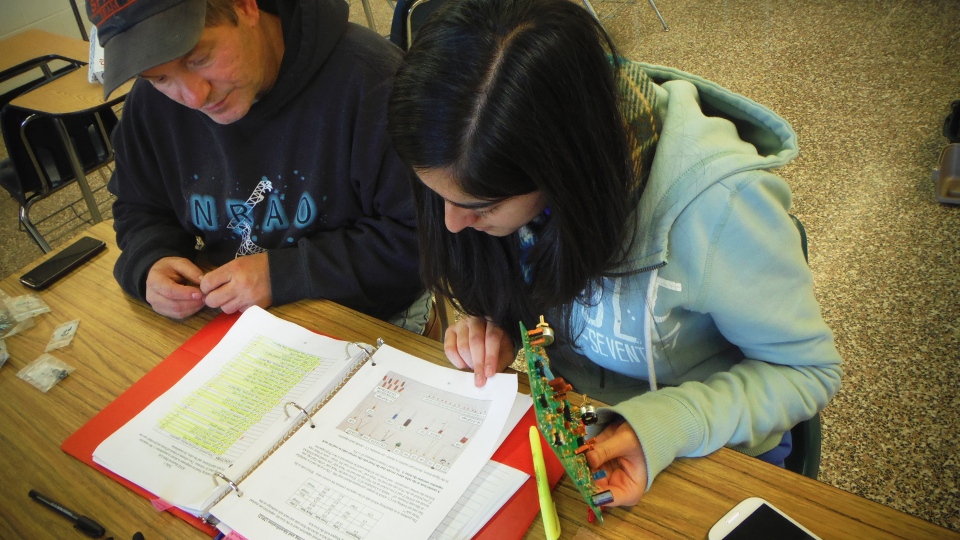

The J.R. Tucker Radio Astronomy Club wishes to thank SARA for a grant to obtain the Radio Jove kit.
[Editors Note: Good luck and we are looking forward to hearing more from your team!]
The Long Wavelength Array station 1 (LWA1) near Socorro, New Mexico observed Jupiter in late 2012 and early in 2013. We are also currently observing Jupiter on specific days from Oct. 2013 to Feb. 2014. The observations of Jupiter use two beams, each having a 16 MHz bandwidth centered at 20 MHz and 28 MHz, respectively. More information about the LWA instrument can be found at: http://www.phys.unm.edu/~lwa/index.html. The data files are huge and take some time to analyze, but we have seen some fantastic Jupiter events so far.
Below is an example of some of the first observations of Jupiter using the LWA1 instrument (Figure 1). This Io-A/Io-C event clearly shows the right-hand (RH) polarized Io-A storm as well as the left-hand circularly polarized (LH) Io-C storm. At certain longitudes both polarizations are being emitted simultaneously; this indicates either both hemispheres of Jupiter are active or the same hemisphere is emitting both polarizations. We are not sure which is the correct explanation for this event, but there are some good clues to help us understand how these emissions are generated.

The LWA1 telescope also has the capability to record data at frequency resolutions as fine as 5 kHz and time resolution as short as 0.21 ms. Analyzing data at higher resolution shows excellent modulation lanes, short duration S-bursts, and narrowband N-events. Some of our Radio Jove team members are helping to analyze these data, and a journal paper will be submitted in the very near future.
Table 1 below gives the predictions for the best events at the LWA1 observatory. We are going to try to observe Jupiter for as many of these events as possible. Radio Jove participants are encouraged to observe at these times because sometimes it is necessary to validate the LWA1 observations. Please submit any data via the Radio Jove Archive. You can use the web interface or the latest version of Radio-SkyPipe (v2.6.4). If you still need a password please contact Leonard Garcia. Thank you!
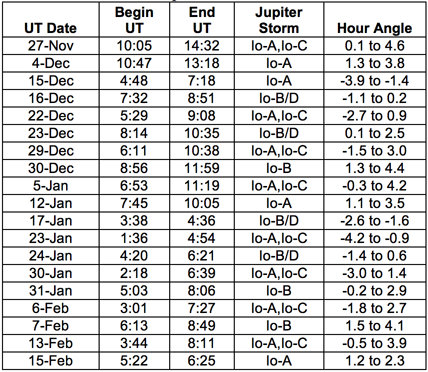
We describe observations of Jovian decametric emissions using radio spectrographs operating simultaneously at four geographic locations. Sometimes signals appear similar to one another while at other times signals appear very different at different observatories. Frequently, signals received at one observatory may not even be detected at other locations. Variations in signal strength and structure are likely caused by ionospheric effects as well as propagation effects in the interplanetary medium. These effects are of interest to observers using Jove receivers and comparing SkyPipe records obtained at different observatories.
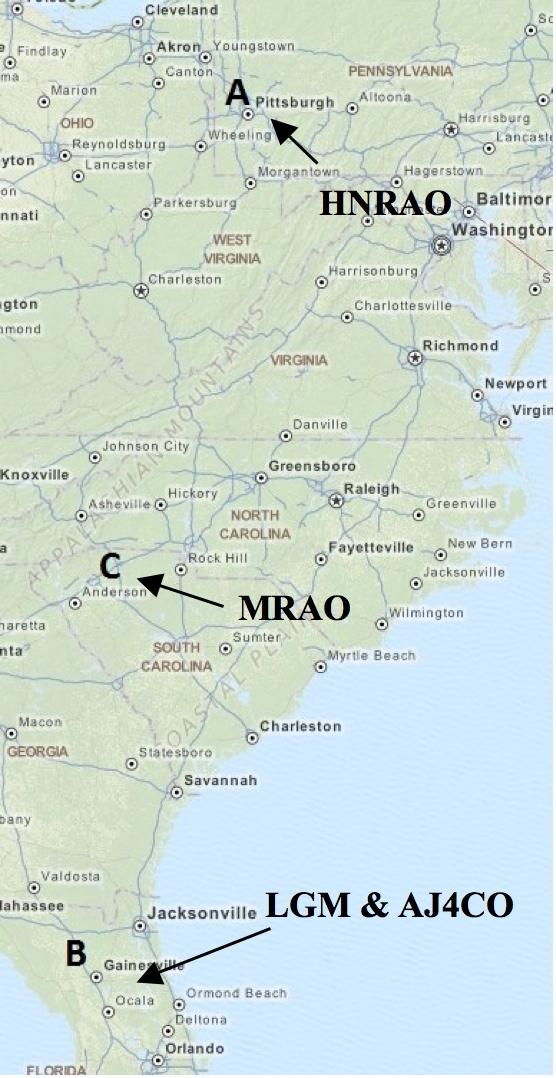
Simultaneous spectrograms, showing L-bursts from different observatories recorded during a non-Io A event on January 3, 2013, are seen below.
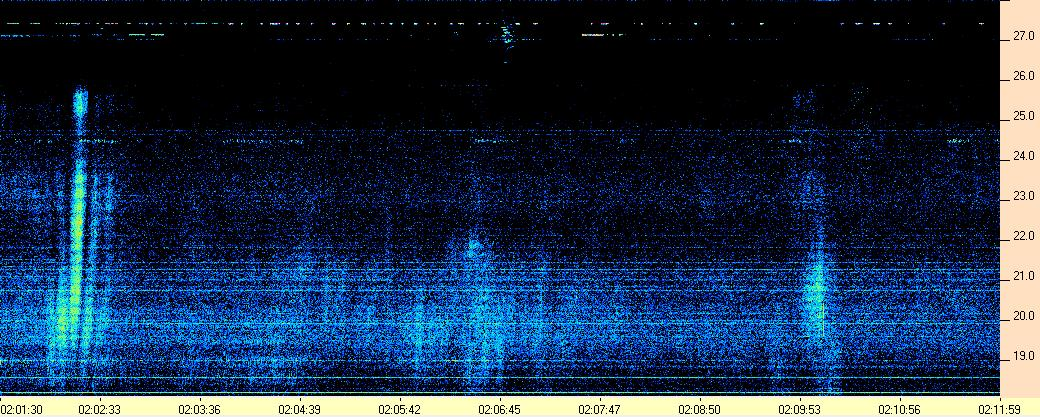
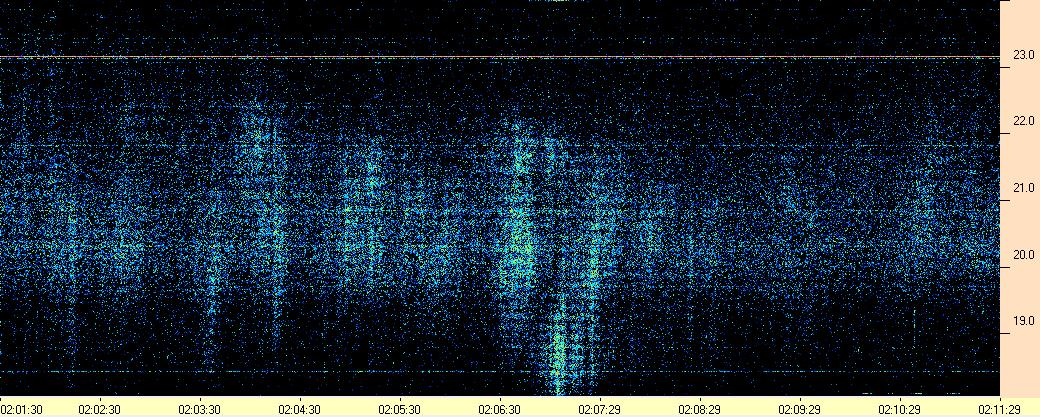
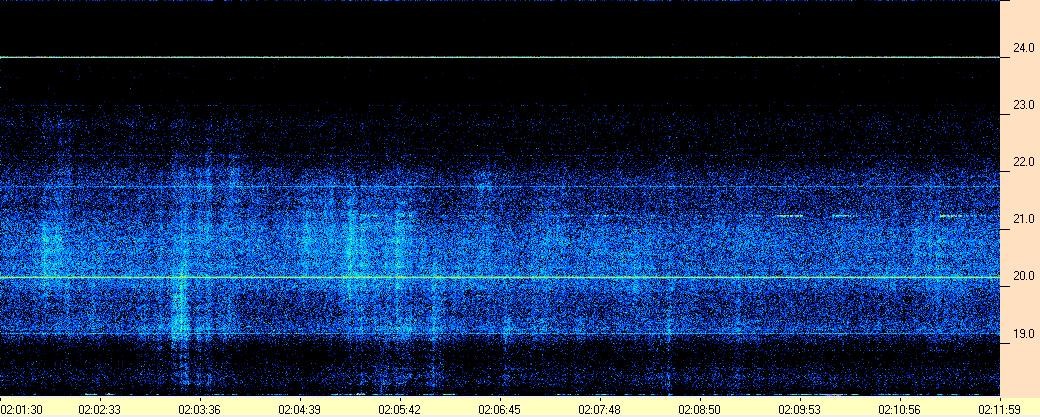
Please view the complete paper which was delivered July 2013 at the Society of Amateur Radio Astronomers (http://radio-astronomy.org/) annual conference held at NRAO, Green Bank, WV.
With the installation of the dual polarization spectrograph (DPS), the need arose for an antenna array that could discriminate between left and right circular polarization. Conical log spiral antennas were considered, but ultimately rejected due to space limitations and complexity of construction. A suitably designed array of terminated folded dipoles (TFD’s) would be a better fit. The resulting eight element TFD array consists of two square arrays of TFD’s along a north-south line (see diagrams below). The spacing between the two square arrays is the same as the size of one square, 32 feet.
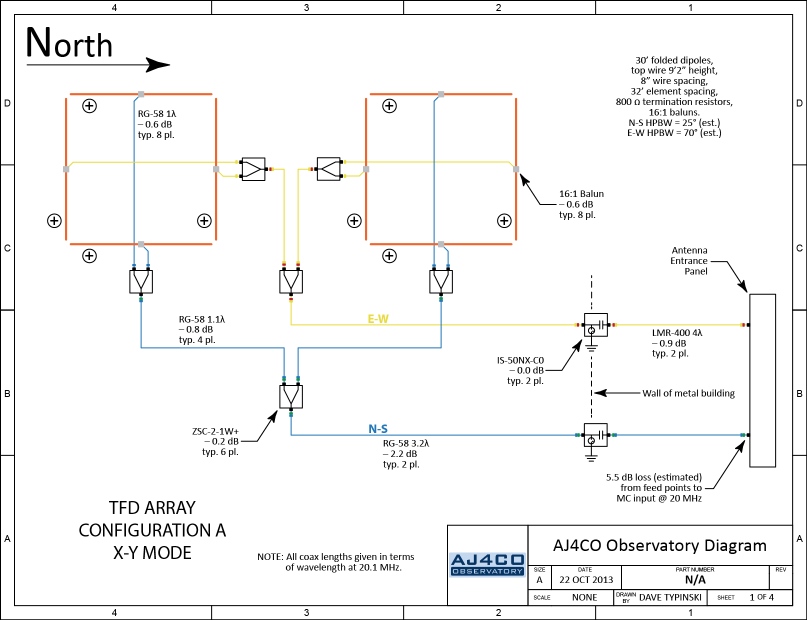
In configuration A, all the N-S elements are combined with no phasing and all the E-W elements are combined with no phasing. In this scheme, a 10.7 MHz hybrid ring between the DPS IF strips and the detectors is employed to produce RCP and LCP spectrograms.
In configuration B, several wideband 90 degree hybrids produce RCP and LCP at the array. This has the advantage of allowing two Jove receivers to be hung off the array’s multicoupler outputs, but is as yet untested.
According to the EZNEC+ model, each square array of zenith-beamed TFD’s has a circularly polarized directivity gain of 4.6 dBi in a roughly hemispherical pattern.
Combining two square arrays theoretically increases the gain by slightly less than 3 dB, to perhaps 7.5 dBi total. Comparison of spectrograms produces using the TFD array and a standard Jove array show that the real world gain may be somewhat higher. Unfortunately, EZNEC+ does not support enough antenna wire segments to model the full eight element array (there are 1,342 segments in one square array model; the max in EZNEC+ is 1,500).
Each TFD element is 30 feet wide with an eight inch vertical separation between the element wires. An 800 Ω terminator resistor is located at the middle of the top wire and a 16:1 balun transformer is used as a match to 50 Ω coax at the feedpoint in the middle of the bottom wire.
New masts were used (PT 4x4x16’s, 4’ deep, 12’ above grade) for the dual square TFD array (8 TFDs in two square arrays on N-S line). A theodolite was used to mark a level plane so all the antenna elements could be installed in the same horizontal plane. There is a 2’6” variance from the lowest to highest point along the grade. The average antenna height is 9’2” from grade level to the top element wire, same as the XTFD (two orthogonal TFD elements) prototype.
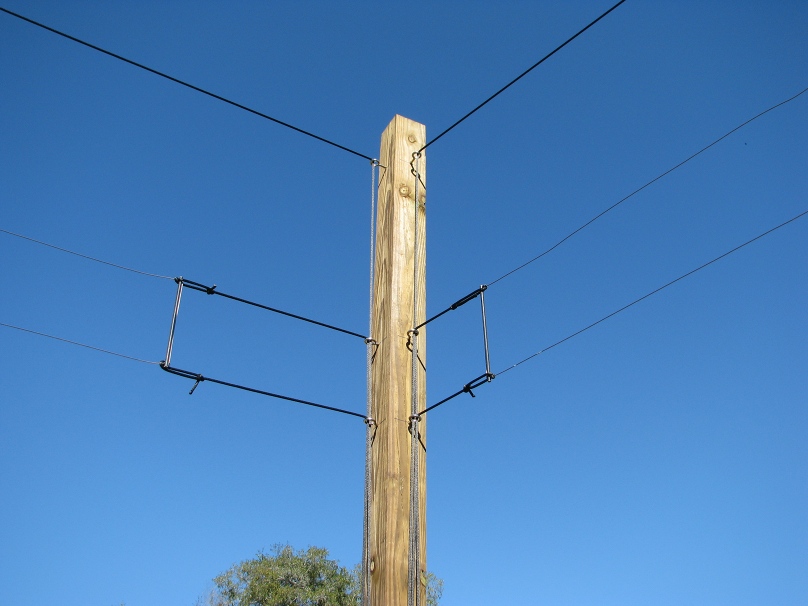
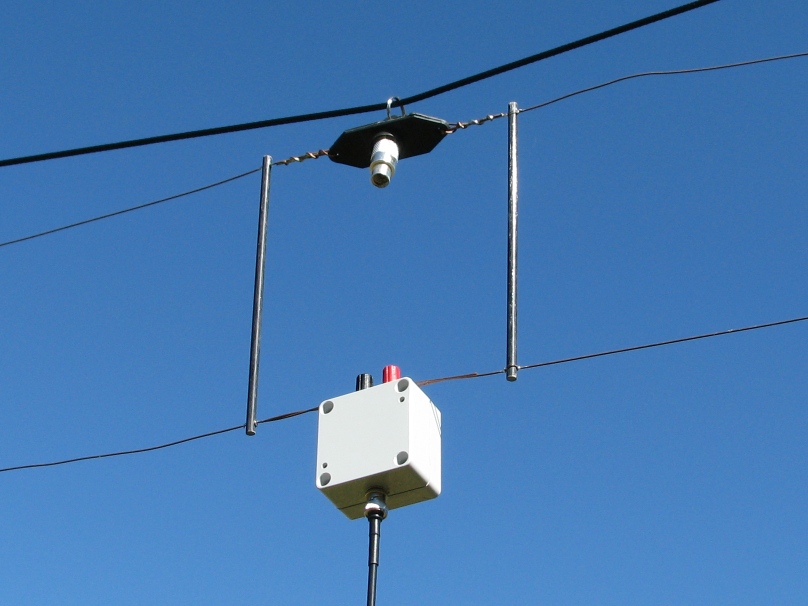
Configuration A (see diagram above) allows the DPS to provide much more detail in its spectrograms compared to either the standard Jove array or the prototype XTFD array (two orthogonal TFD elements). Examples of some spectra From the Io-A storm on 06 Nov 2013 produced with the DPS using the TFD array versus the FS-200 on a Jove array are shown below.
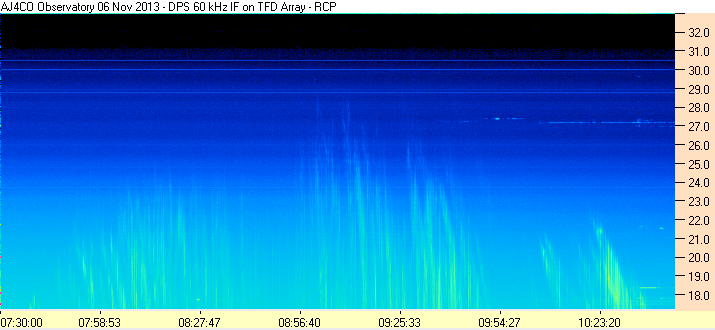
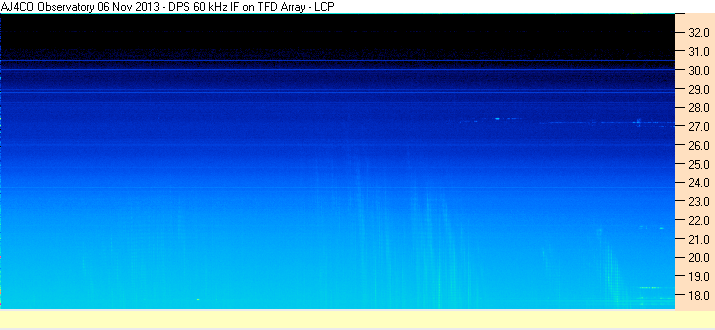

It should be noted that while the individual TFD element design is fairly established at this point, the eight element array is still an experimental endeavor. There may be better ways of phasing the elements together; and, beam steering methods have yet to be explored.
On September 25, students of the University of Calgary had the opportunity to attend an edifying lecture by Mr. Tushar Sharma, Graduate Student, I Radio Labs, University of Calgary and Chairperson, GOLD & WIE at IEEE SAS, on NASA's Radio Jove project. This lecture was sponsored by the IEEE Student Branch.
Radio Jove is a hands-on educational activity that brings to us the radio emissions produced by the sun, planets and the galaxy, which we can't hear directly. This radiation from celestial activities can tell us a lot about the happenings of the outside world.
Mr. Tushar Sharma, gave a presentation detailing the basics of Radio Jove technology and the efforts of the students who organized this project under the umbrella of the IEEE, and included his personal experiences too.
He pointed out that Radio Jove can be used by high school science classes, college science courses or laboratories, middle school classrooms and also interested individuals. The response was very positive. Among the attendees were physics and engineering undergraduate students, professors from the Physics Department and Bruce Rout from the Astronomy Teacher Training Institute.
Apart from the talk, a demonstration of a Software Defined Radio and a stripchart recorder was shown to the audience to give them a feel for detecting electromagnetic waves. This demonstration helped the participants to better understand the concepts involved in the Radio Jove project.
Thanks go out to the IEEE Student Branch Calgary, Professor Fadhel Ghannouchi, I Radio Labs, the University of Calgary, IEEE GOLD and the NASA Radio Jove team for their constant support and motivation.
[Editors Note:] Tushar also sent us information about the IEEE summer grant program at the Maharaja Surajmal Institute of Technology, New Delhi. This program provides students the opportunity to learn about radio astronomy and astrophysics. Students worked with Radio Jove equipment, the Stanford Sudden Ionospheric Disturbance (SID) detector, the Itty Bitty Radio Telescope, and perform sky wave and radio meteor detection experiments.
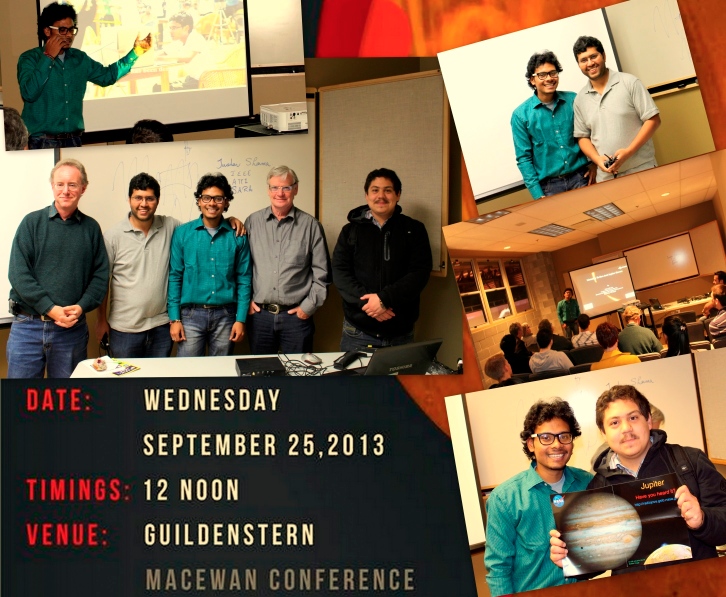
Nov 15, 2013
Gainesville, Florida – Radio astronomy was represented by several Radio Jove members at the annual Starry Night event at the University of Florida.
Starry Night is a program designed to bring awareness of astronomy and science to the public by offering free activities and displays. The outdoor portion consisted of several telescopes viewing the Moon, Jupiter, and several close binary stars. Radio astronomy was represented by the Radio Jove display.
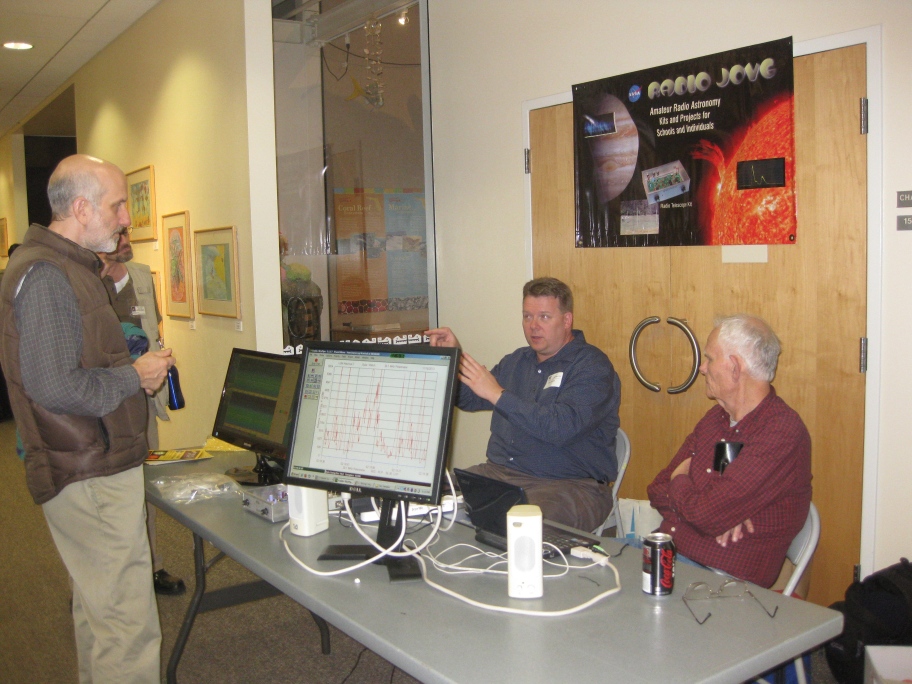
Having to move indoors this year due to rain, the Radio Jove exhibit consisted of several Jove receivers (built and working, built and naked with no lid, and the bag-of-loose-parts version), an Radio-SkyPipe strip chart display, recorded Jovian S and L burst audio, recorded solar burst audio, and a movie mode display of the spectrograph data recorded at last year’s (2012) Starry Night event (it was assumed that management would frown on the idea of hanging a half wave dipole from the drop ceiling in the hallway).
Over 100 Radio Jove flyers were handed out to interested parties. Attendance was higher this year despite the rain – over 1,000 visitors in the first hour alone, with 1,400 total. Approximately half the attendees stopped by the RJ booth to listen to Jupiter and/or ask questions.
More info:
http://www.flmnh.ufl.edu/calendar/grid/starry-night/
The JOVE Bulletin is published twice a year. It is a free service of the Radio JOVE Project. We hope you will find it of value. Back issues are available on the Radio JOVE Project Web site, http://radiojove.gsfc.nasa.gov/
For assistance or information send inquiries to:
or
